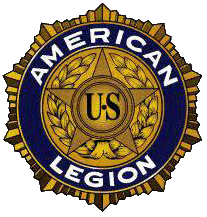
DAVID H. McNERNEY
AMERICAN LEGION POST 658
" FOR GOD AND COUNTRY "


14890 FM2100 Crosby Tx, 77532 Call 281-328-1814

The Medal of Honor is the nation's highest medal for valor in combat that can be awarded to members of the armed forces.
The medal was first authorized in 1861 for Sailors and Marines, and the following year for Soldiers as well. Since then, more than 3,400 Medals of Honor have been awarded to members of all DoD services and the Coast Guard.
Medals of Honor are awarded sparingly and are bestowed only to the bravest of the brave; and that courage must be well documented.
The Full Story
During the first year of the Civil War (1861–1865), a proposal for a battlefield decoration for valor was submitted to Lieutenant General Winfield Scott, the Commanding General of the United States Army, by Lieutenant Colonel Edward D. Townsend, an assistant adjutant at the Department of War and Scott's chief of staff. Scott, however, was strictly against medals being awarded, which was the European tradition. After Scott retired in October 1861, Secretary of the Navy Gideon Welles adopted the idea of a decoration to recognize and honor distinguished naval service.
On December 9, 1861, Iowa Senator James W. Grimes, Chairman on the Committee on Naval Affairs, submitted Bill S. 82 (12 Stat. 329–330)[20] during the Second Session of the 37th Congress, "An Act to further promote the Efficiency of the Navy". The bill included a provision (Chap. 1, Sec. 7) for 200 "medals of honor", "to be bestowed upon such petty officers, seamen, landsmen, and marines as shall most distinguish themselves by their gallantry in action and other seaman-like qualities during the present war, ... On December 21, the bill was passed and signed into law by President Abraham Lincoln. Secretary Welles directed the Philadelphia Mint to design the new military decoration. On May 15, 1862, the United States Department of the Navy ordered 175 medals ($1.85 each) from the U.S. Mint in Philadelphia with "Personal Valor" inscribed on the back of each one.
On February 15, 1862, Senator Henry Wilson, the chairman of the Senate Committee on Military Affairs and the Militia, introduced a resolution for a Medal of Honor for the Army. The resolution (37th Congress, Second Session; Resolution No. 52, 12 Stat. 623–624) was approved by Congress and signed into law on July 12, 1862 ("A Resolution to provide for the Presentation of "Medals of Honor" to the Enlisted Men of the Army and Volunteer Forces who have distinguished, or may distinguish, themselves in Battle during the present Rebellion"). This measure provided for awarding a medal of honor "to such non-commissioned officers and privates as shall most distinguish themselves by their gallantry in action and other soldier-like qualities during the present insurrection." During the war, Townsend would have some medals delivered to some recipients with a letter requesting acknowledgement of the "Medal of Honor". The letter written and signed by Townsend on behalf of the Secretary of War, stated that the resolution was "to provide for the presentation of medals of honor to the enlisted men of the army and volunteer forces who have distinguished or may distinguish themselves in battle during the present rebellion." By mid-November the Department of War contracted with Philadelphia silversmith William Wilson and Son, who had been responsible for the Navy's design, to prepare 2,000 medals for the Army ($2.00 each) to be cast at the mint. The Army's version had "The Congress to" written on the back of the medal. Both versions were made of copper and coated with bronze, which "gave them a reddish tint".
On March 3, 1863 Congress made the Medal of Honor a permanent decoration, and was authorized for officers of the Army.[30][31] On March 25, the Secretary of War presented the first Medals of Honor to six U.S. Army volunteers in his office.
In 1896, the ribbon of the Army's version of the Medal of Honor was redesigned with all stripes being vertical. Again, in 1904 the planchet of the Army's version of the Medal of Honor was redesigned by General George Lewis Gillespie. The purpose of the redesign was to help distinguish the Medal of Honor from other medals, particularly the membership insignia issued by the Grand Army of the Republic.[35]
In 1917, based on the report of the Medal of Honor Review Board, established by Congress in 1916, 911 recipients were stricken off the Army's Medal of Honor list because the medal had been awarded inappropriately.[36] Among them were William Frederick "Buffalo Bill" Cody and Mary Edwards Walker. In 1977, Congress began reviewing numerous cases; it reinstated the medals for Cody and four other civilian scouts on June 12, 1989. Walker's medal was restored in 1977.
A separate Coast Guard Medal of Honor was authorized in 1963, but not yet designed or awarded.
A separate design for a version of the medal for the Department of the Air Force was created in 1956, authorized in 1960, and officially adopted on April 14, 1965. Previously, airmen of the U.S. Air Force received the Army's version of the medal